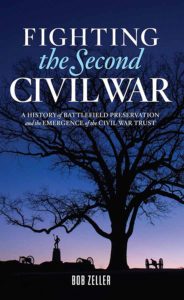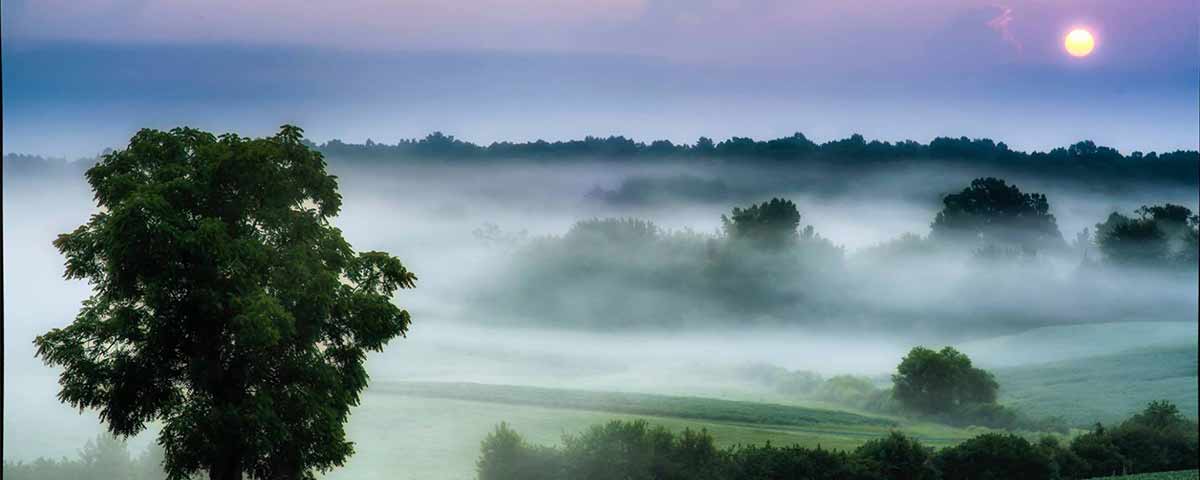
[dropcap]W[/dropcap]ars tend to be extended, messy affairs, won in a series of battles large and small, on the field and in back rooms, by leaders and foot soldiers. This was true of the Civil War—the first one, that is—and it’s true of what author and historian Bob Zeller has dubbed the “second Civil War,” the 30-year effort to save Civil War battlefields from development and desecration. As this exhaustively researched and often stirringly written book illustrates, the leaders waging this second war have been relentless.
Protecting the Chancellorsville battlefield in Virginia in the early 2000s is just one of many examples in the book. In 1999, the Association for the Preservation of Civil War Sites (APCWS) and the original Civil War Trust had merged to become the Civil War Preservation Trust and found its footing as a preservation organization (more on this later). In Chancellorsville, Dogwood Development Corp. had proposed a mixed-use development in the heart of the first-day battleground. Trust President Jim Lighthizer tried to negotiate with the developer but met a proverbial brick wall. The Trust initiated a coordinated advocacy battle that operated on several levels, until Dogwood dropped the proposal.
Yet the celebration was short-lived, as other developers were more than ready to step into the space Dogwood had vacated. The Trust then brokered a deal that saved historic battlefield land in exchange for greater development density elsewhere.
Throughout the book, the Civil War Trust (a name to which it returned in 2011) is shown to be a dogged defender and deal-maker in places like Manassas, Gettysburg, Antietam, Franklin, and more. Zeller recounts these stories with verve, introducing heroes both sung and unsung, including the Trust’s Chief Policy Officer Jim Campi, Brandy Station advocate Clark B. “Bud” Hall, passionate Manassas preservationist Annie Snyder, historians Ed Bearss, Gary Gallagher, James McPherson, and Lighthizer himself, who soldiers on despite suffering a personal tragedy that Zeller chronicles with sensitivity. The battles they wage will be familiar but are important to retell, from the proposed Disney’s America theme park at Manassas to the repeated casino proposals at Gettysburg. Several battles are painfully lost, but the Trust’s record includes saving more than 45,000 acres at 132 battlefields in 23 states.
Sadly, one of the ugliest battles portrayed in the book is the one that arose between APCWS and the Trust, a true civil war among combatants with more in common than not. The two separate groups shared a core mission but different approaches. By the late 90s, both groups had developed some organizational slack. The obvious choice was for the groups to merge, with Lighthizer at the helm. Although it was ostensibly a marriage, in actuality it resembled an acrimonious divorce, culminating in the firing of several APCWS staffers. None of the groups’ leaders come off particularly well during this episode, including Lighthizer, and it’s a credit to the author and the Trust (as the book’s publisher) that their decisions are portrayed warts and all. That said, the narrative bogs down here in more bitter detail and office politics than it probably needed from a distance of nearly 20 years. (Disclosures: The book includes an interview with this magazine’s editor, Dana Shoaf, a former APCWS education director who was there during the merger. Also, this reviewer once worked with the Trust as a freelancer in a limited fashion years ago.)
The book’s greatest strength is Zeller’s use of extensive interviews, oral histories, and meeting minutes so that these battles come to life through their participants’ voices. Not surprisingly, the Civil War often inspires eloquence, and it is particularly moving to hear once again from the late Brian Pohanka. Attending a vigil in Chancellorsville, Pohanka quoted from Joshua Chamberlain, who said, “Willing to die, we will not be forgotten.” Then, with his voice rising, Pohanka declared, “They will not be forgotten!” Given his due in this book, Pohanka—along with his many colleagues in the Civil War preservation community—won’t soon be forgotten either.





